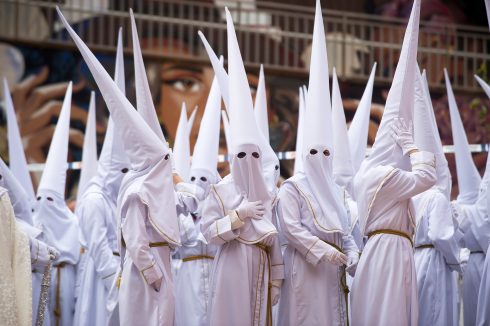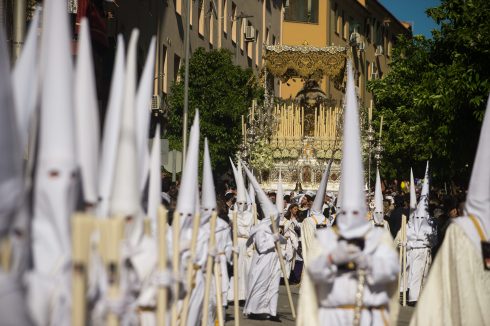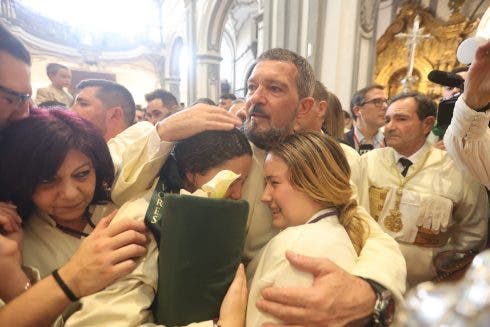MALAGA’S Semana Santa (Holy Week) is one of the highlights of the calendar, which transforms the city into a saintly explosion of religious processions and pageantry.
So the recent unseasonal rains have wreaked havoc in a week that many in the cofradias (brotherhoods) spend all year waiting for.
Malaga’s most famous son, Antonio Banderas, was even seen consoling devastated nazarenos in the city church after the first day of the processions on Sunday were called off.

The emotional scene was captured on Sunday, the first day of Semana Santa, after his cofradia in the Virgen María Santísima de las Lágrimas y Favores learned that the rain had banished them to remain indoors.
“Holy Week is a metaphor for life, sometimes there are tears and sometimes there are joys. And this year we have had our fair share of tears,” said the actor, who has been a ‘mayordomo’ with the cofradia for two decades.

There are 47 cofradías that participate in Malaga’s Semana Santa, each producing a procession known for their uniqueness and blend of solemnity with exuberance.
On Monday, Penitents from ‘Gitanos’ brotherhood made it out into the streets of Malaga carrying the customary statue of the Virgin.
They were greeted by thousands of spectators who braved the streets under a patchy sky.
The nazarenos wore distinctly ghostly head coverings under robes and tassels for their solemn procession.
The following day, the ‘Rocio’ brotherhood ventured out in their tall, conical white hoods that seem to attract so many comparisons to the USA’s racist Klu Klux Klan.




Foreign visitors to Spain during Easter week might gasp in horror when they see people in these costumes parading through the streets.
But while these capirotes bear an uncanny resemblance to the official headdress of the KKK, they could hardly be further removed in meaning.
Pre-dating the KKK by 200 years, the saco bendito, or ‘blessed robe’ stems from the Spanish Inquisition. Male and female convicts had to wear a yellow garment that covered their chest and back along with a cardboard cone whose colour alluded to the person’s sentence. Red, the colour of execution, brought the greatest shame.
Over the years, however, capirote wearers extended the length of these punitive head pieces until they hid their faces entirely, granting anonymity.





Drawn by its connotations of penitence, a cornerstone of Catholic dogma, Sevillan brotherhoods in the 1600s restored the capirote and from there it spread to other Spanish cities.
Meanwhile, the KKK did not appear until the 19th century.
There are still four more days of Semana Santa to run, culminating on Resurrection Sunday, which is marked by a celebratory festival feel – if the rain doesn’t get in the way!


